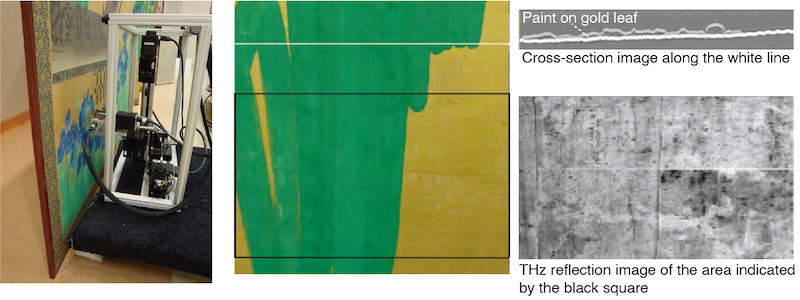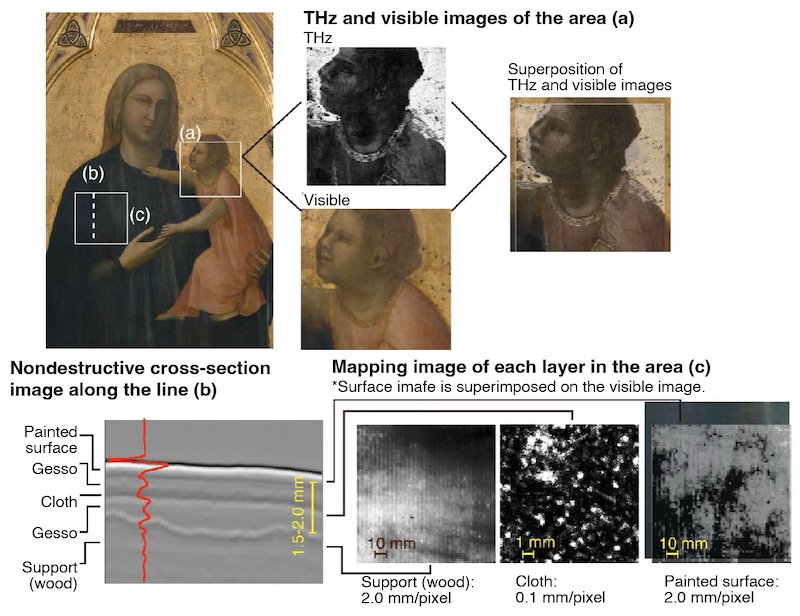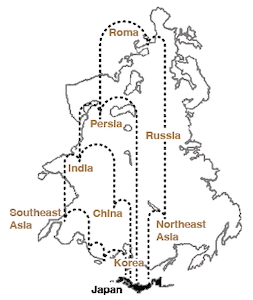INTRODUCTION
Heritage Science
Heritage science is the scientific diagnosis of cultural objects, which is the common property of mankind. In European countries, it is treated as a scientific research field, such as applied physics and geology.
As the objects under examination are all unique, nondestructive observation is essential, and electromagnetic waves are widely used to observe the internal structure and analyse the materials. The main purposes of the research are to understand the artwork and to examine the condition of the object prior to conservation treatment.
Historical study of artworks
Heritage Scienve studies provide information necessary for art historical research. For example, it was possible to estimate how the technique of Ogata Korin, who left many works with a high design quality, changed over time, based on the way the gold leaf was applied.

Reference: M. Leona, P. S. Londero, J. Perry, K. Fukunaga, G. H. Bailey, C. Hale, Designing Nature: Ogata Kōrin's Technical Choices in Irises at Yatsuhashi, Science and Art The Painted Surface, Royal Society of Chemistry, pp. 336-353, 2014.
DOI: https://doi.org/10.1039/9781839161957-00336 (2014)
NICT Press release:New Discovery by THz Imaging Marks an Important Step to Appreciate Works by Ogata Korin
Scientific examinations before conservation treatment
In the same way that a doctor carries out various examinations before operating on a person, a survey and diagnosis is carried out to determine the structural and material condition of a work following destruction, damage or deterioration (i.e. symptoms), as well as its past restoration history (i.e. medical history).
The documentation is a valuable record for the restoration of the next generation. For example, a tempera painting by Giotto in the Galleria degli Uffizi collection was found to have two gesso layers as preparation.

Reference: A. Tartuferi ed. "Giotto Il restauro del Polittico di Badia", Mandragola, 2009.
DOI: https://doi.org/10.1039/9781839161957-00336 (2014)
NICT Press release:Non-invasive Observation of Internal Structure of a Giotto's Masterpiece by THz Imaging
From Heritage Science to Global Cultural Heritage Studies by using informatics
Just as doctors in the medical field make diagnoses based on a variety of data, not just one type of test value, in the case of cultural property, comparing and integrating the results of surveys carried out using a variety of sensing technologies can improve diagnostic techniques and save time.In addition, a 'spatio-temporal bird's-eye view of cultural heritage' created by a data scientist with no historical preconceptions could be a useful resource for humanities researchers.
Ancient artworks have been excavated in Japan that have travelled across the Eurasian continent by various routes. By rearranging them in time and space and giving them a bird's-eye view, it should be possible to trace the history of mankind based on ‘real objects’.

Reference: Hajime Takano, How to Read the World Map, Kodansha, 1999, ISBN:9784061494640